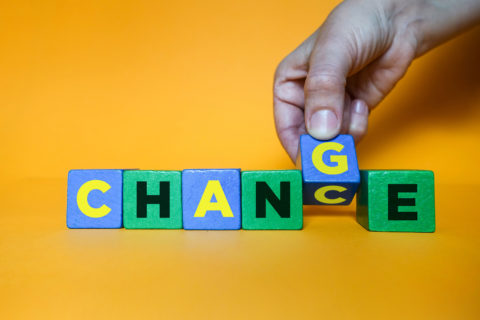For the research industry, the central paradox of the COVID-19 pandemic is that at THE most important time for the voice of the customer research in at least a generation the budgetary and staff resources to conduct this work may be severely constrained by the economic shockwaves rippling through corporate finances.
In this crisis, all business leaders need to manage against three-time horizons: (1) immediate transition, (2) operational continuity during the pandemic, and (3) post-pandemic growth.
While the first two-time horizons are critically important to the survival of most businesses, this article is focused on the third time horizon, after the pandemic. Industry leaders need to keep an eye on the endgame, even when they are in the eye of the storm.
With this in mind, I have created a base case scenario and four alternative scenarios for the post pandemic research industry.
The base case scenario assumes that the pandemic accelerates the rise of analytics in market research. Already at near parity with interrogatory research, analytics (especially social media analytics) is likely to grow faster under constrained corporate budgets. Moreover, constrained corporate budgets and massive internal demands for consumer intelligence are likely to increase the use of DIY data collection tools. Further, travel restrictions and warnings about the size of public gatherings are likely to shift in-person focus group work to online qual platforms and MROCs. It is also logical to anticipate supplier consolidation, with supplier firms of all sizes going out of business from the immediate, global, economic shock. Research agencies with high operational gearing or heavy exposure to the most impacted consumer businesses are the most at risk. Surviving agencies will be leaner, with dramatically lower (or zero) office costs. Practitioners in our industry with the ability to conduct public opinion and crisis research at speed, synthesizers, polymaths, those with analytics and data mining skills, ethnographers, and those with strategic foresight skills will experience the most demand and growth potential.
Most businesses around the world were completely surprised by the pandemic, with little contingency planning in place. The post pandemic demand for strategic foresight, horizon scanning and risk identification, will be enormous. In 2009, the Boston Consulting Group created a 4-stage maturity model for corporate insight functions. It is noteworthy that the 4th and highest stage in their model is the “strategic foresight organization”, highlighting the need for anticipatory strategy.
With foresight in mind, let’s consider four alternative futures for the research industry.
Our general advisory to corporate clients is that there are four basic, post pandemic scenarios for virtually every industry and business, based on the two greatest questions of the moment – (1) What will be the shape of the post pandemic recovery? (a V, long U or W) and (2) How similar or dissimilar will the post-pandemic operating environment be to late 2019?
By crossing these two open questions, we create what futurists call the double uncertainty matrix, designed to generate four very different scenarios.
The four scenarios are:
- Back to Normal – Sharp Economic Rebound & Similar Operating Environment
- New Normal – Sharp Economic Rebound & Dissimilar Operating Environment
- Turbulence – Unsteady Economic Rebound & Similar Operating Environment
- Resilience / Adaptation – Unsteady Economic Rebound & Dissimilar Operating Environment
Back to normal is the scenario most everybody wants, and the V shaped recovery scenario policymakers have in mind. It would represent a return to the industry circa 2019. This is a comfortable scenario, but unlikely due to the cascading impacts of the pandemic.
New normal is the scenario in which the economy and industry rebound quickly, but the operating environment is changed. Those changes would include accelerated growth in analytics, a decline in in-person focus groups, a dramatic shift to remote work for resiliency, increased demand for ethnographic understanding of new consumer behaviours, more focus on strategic foresight, and a consolidated supplier ecosystem.
The turbulence scenario forecasts recurring outbreaks in 2020 and an unsteady, W shaped recovery, with significant economic dislocation, but a 2021 return to an operating environment similar to the contours of 2019. This scenario represents a more difficult recovery and the need for more operational discipline, but an eventual return to the world and industry we remember in 2019.
The fourth scenario is more challenging. The resilience and adaptation scenario forecasts a difficult, W shaped, recovery and a new operating environment post-pandemic. I believe this is the most likely scenario. In this scenario, the pandemic accelerates the rise of analytics, remote focus group options, and proprietary MROCs. It favours the polymath, the synthesizer, the ethnographer, and the analyst. Many of us may learn to work from home, permanently, as the industry sheds real estate and office costs. Suppliers in heavily impacted sectors go out of business or are purchased by their dominant corporate customer. Brand trackers are considerably tightened in order to shift budget for segmentations of a radically altered consumer landscape. And, as societies seek greater local resilience, supply chains are shortened, and brands seek to re-localise.
Research industry leaders need to prepare their functions and firms now, pressure testing their strategy against the base forecast and these four, alternative futures.
The best way to predict the future is to make it.


